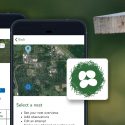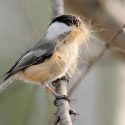 Photo ©
Keith Williams
Photo ©
Keith Williams

Download the NestWatch App!
Whether you monitor an extensive nest box trail or find a single nest in your yard—track nests, eggs, and baby birds with the new NestWatch app. No data sheets necessary! You can now record your observations in real time. Map your nest sites with ease using your phone’s built-in GPS, and keep tabs on your nesting statistics from anywhere. Have a remote location with patchy cell service? No worries. The NestWatch app has an offline mode, allowing you to record and save your nest observations without WiFi or cellular service. Download the free app from Google Play or the Apple App Store.
If you already have a NestWatch account, sign into the app with your NestWatch username. Your data will automatically sync to the device. Download the app, explore its features, and let us know your thoughts. We hope you find this new technology improves your experience monitoring nesting birds.
Consult our Mobile App FAQs if you experience any issues while downloading or using the app.
![]()

The 2016 NestWatch Digest Is Here
When the breeding season comes to a close, the real work of analyzing your data begins. Every winter we comb through nesting attempts from across North America and tease out the season’s trends for different regions. Want to know if last year was a “good” year for nesting birds? Read the Digest’s Regional Roundups to find out.
This year’s Digest also takes a closer look at an unusual nesting discovery, a Dark-eyed Junco nesting in a nest box. Juncos typically nest near the ground. We also celebrate historic Eastern Phoebe records now archived in our database and consider the impact of human structures on phoebes’ nest site preferences. Plus, get the scoop about our student-led research on supplemental feeding. The 2016 NestWatch Digest combines our latest data analysis and must-read news! Check it out.

Providing Nesting Materials Safely
Birds’ nests are works of art, woven fibers and sculpted mud. Sometimes those gorgeous nests contain human-made materials such as cotton threads or plastic tinsel. Even your dog’s fur or a horse’s mane can be incorporated into a bird’s nest.
It is tempting to provide these easy-to-gather materials for birds; however, new evidence from wildlife rehabilitators suggests that caution is warranted when putting out nesting materials. Even fur and other seemingly innocuous materials can tangle and entrap adults and nestlings. In light of this new data, the Lab has recently revised its list of Dos and Don’ts for providing nesting materials to birds. See also: our blog post about what nest materials are best to provide for birds.
Do your part and keep birds safe this nesting season!
Do provide any combination of the following: dead twigs and leaves, dry grass (make sure the grass is chemical-free), feathers, plant fluff or down (e.g., cattail fluff, cottonwood down), moss, bark strips, and pine needles.
Don’t provide: plastic strips, tinsel, cellophane, aluminum foil, dryer lint, animal fur or hair (including human hair), yarn, felt, or bits of cloth.